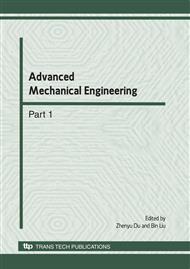p.269
p.273
p.277
p.281
p.285
p.289
p.293
p.297
p.303
Nonlinear Analysis of Piercing Rolling Process by Element-Free Galerkin Method
Abstract:
During piercing rolling simulation, extreme mesh deformation cannot be solved by the finite element method (FEM). Re-meshing is necessary to prevent the effect of severe mesh distortion. However, the element-free method can solve this problem because the continuous body is discretized with a set of nodes, not meshes. In this paper, three-dimension rigid-plastic element-free Galerkin Method (EFG) is introduced to analyze the piercing rolling process. The approximation functions are calculated considering a moving least squares (MLS) approach. The Newton-Raphson method is used for the solution of the nonlinear system of equations. The equivalent stress, the equivalent plastic strain and the equivalent plastic strain rate obtained by EFG and rigid-plastic FEM are analyzed and compared. The simulation results of the EFG method are in agreement with those obtained by using the rigid-plastic FEM and the effectiveness of the model is verified.
Info:
Periodical:
Pages:
285-288
Citation:
Online since:
June 2010
Authors:
Keywords:
Price:
Сopyright:
© 2010 Trans Tech Publications Ltd. All Rights Reserved
Share:
Citation:


